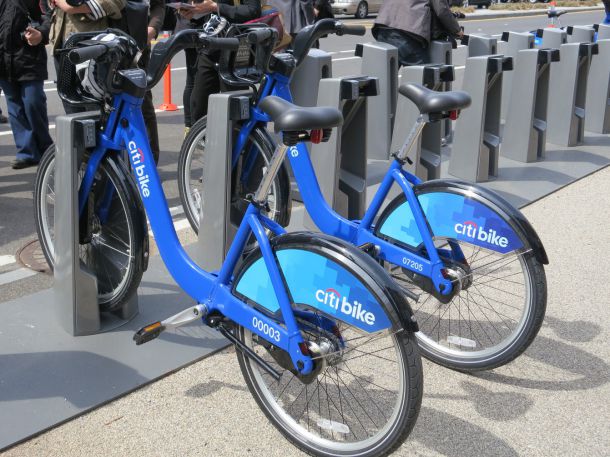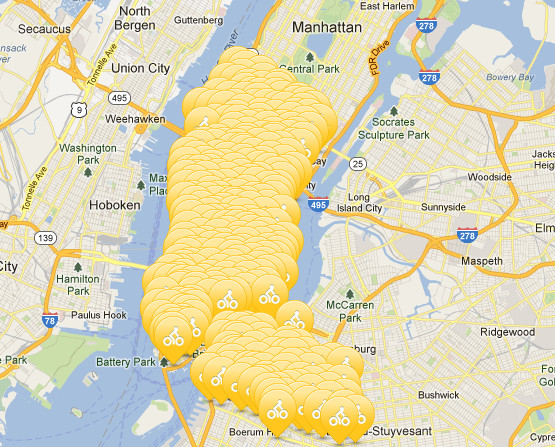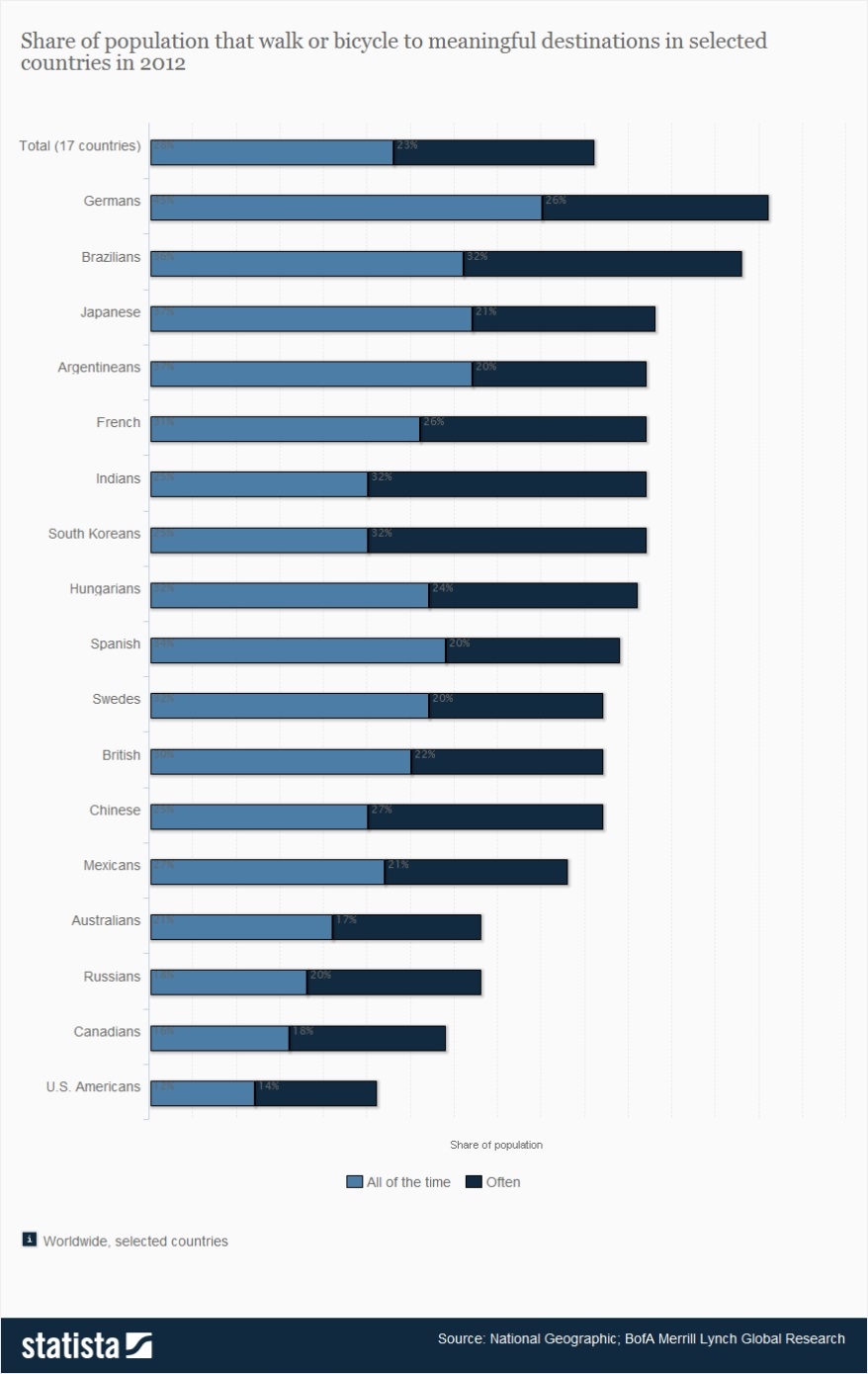
After much trial and tribulation, New York City’s bike share program, Citi Bike, is finally set to launch at the end of this month. The program, originally conceived in 2011, has experienced a variety of setbacks and delays both from natural disasters such as Superstorm Sandy, and from protests by New Yorkers about implementation. At launch there will be 330 bike docks, and 6,000 bikes located throughout lower and midtown Manhattan and parts of Brooklyn. This is planned to expand to cover Manhattan, Brooklyn and Queens by the time the program is in full swing.
Reception
The reception Citi Bike has received has been mixed. Many New Yorkers protest the curbside and street locations of the docking stations, saying they block access to buildings, impede traffic, and take up valuable parking spots in an already crowded city. Despite the widely publicized complaints, polls show that the majority of New Yorkers are on board with the idea and are looking forward to using the bikes. Since the program is entirely funded by sponsors, and doesn’t use taxpayer money, opponents of Citi Bike have even less reason to complain.The program was adopted in an effort to promote a greener and healthier lifestyle for New Yorkers as well as to provide a quickly implemented transport solution. With limited space for parking and changes to the subway system taking years of planning and millions of dollars, the bike system provides an economical answer. The program will certainly have its growing pains. At the moment Citi Bike’s Manhattan stations will only be available as far north as 59th Street making it tricky for those who live above midtown. Riders who want to use the bikes around Central Park or surrounding areas will need to be prepared to pay for a longer rental period as there is no place to dock the bikes within the park.Riders will be able to choose from an annual membership (starting at $95), 7-day pass (starting at $25), or a 24-hour pass (starting at $9.95). In the first few weeks after launch, special one-day memberships will be available starting at $5 per day to promote use of the bikes. Perhaps New York City should follow in Washington DC’s footsteps by offering free bike helmets for a limited time as well.
The program will certainly have its growing pains. At the moment Citi Bike’s Manhattan stations will only be available as far north as 59th Street making it tricky for those who live above midtown. Riders who want to use the bikes around Central Park or surrounding areas will need to be prepared to pay for a longer rental period as there is no place to dock the bikes within the park.Riders will be able to choose from an annual membership (starting at $95), 7-day pass (starting at $25), or a 24-hour pass (starting at $9.95). In the first few weeks after launch, special one-day memberships will be available starting at $5 per day to promote use of the bikes. Perhaps New York City should follow in Washington DC’s footsteps by offering free bike helmets for a limited time as well.
An International Idea
In many larger European cities bike sharing is the norm, with the earliest program having been implemented in Amsterdam in 1965 and a larger, more successful program in La Rochelle in 1974, which continues today. The largest bike share programs worldwide are in Hangzhou, China, with 65,000 bikes; Shanghai, China with 20,000 bikes; and Paris, France with 18,000 bikes. Citi Bike proposes to be the fourth largest in the world with 600 docking stations and 10,000 bikes by the time it is fully implemented.The United States comes to the bike share idea a bit late in the game. According to Wikipedia, the U.S. has 18 active bike share programs in cities throughout the country with 11 more planned; compare this with the approximately 130 in Europe and one can’t help but wonder what’s taken the U.S. so long. From an international perspective, Citi Bike is a long awaited breath of fresh air and a great asset to city travel for those who need to go short distances and aren’t fans of traveling underground. For many internationals biking is the preferred mode of transportation in cities, with Germans coming in the lead. With such a large international population in New York City, the program is sure to be widely used.It’s not a secret that statistically America falls low on the percentage of population that use bicycles as a mode of transport. However New York is increasingly becoming a bicycle friendly city, and according to NYC Department of Transportation, “New York City doubled bicycle commuting between 2007 and 2011, and aims to triple it by 2017.” Part of this is due to the bike lanes which have been installed to make city biking safer. Within the past three years, the DOT has built 200 miles of bike-lanes in the five boroughs, which almost doubled the on-street bike network. New York International hopes that Citi Bike will aid in the continued growth of bicycle usage and NYC can become a greener, healthier, and more efficient city.
From an international perspective, Citi Bike is a long awaited breath of fresh air and a great asset to city travel for those who need to go short distances and aren’t fans of traveling underground. For many internationals biking is the preferred mode of transportation in cities, with Germans coming in the lead. With such a large international population in New York City, the program is sure to be widely used.It’s not a secret that statistically America falls low on the percentage of population that use bicycles as a mode of transport. However New York is increasingly becoming a bicycle friendly city, and according to NYC Department of Transportation, “New York City doubled bicycle commuting between 2007 and 2011, and aims to triple it by 2017.” Part of this is due to the bike lanes which have been installed to make city biking safer. Within the past three years, the DOT has built 200 miles of bike-lanes in the five boroughs, which almost doubled the on-street bike network. New York International hopes that Citi Bike will aid in the continued growth of bicycle usage and NYC can become a greener, healthier, and more efficient city.
Cost – An International Look
When compared to its international counterparts in major cities, Citi Bike is surprisingly expensive.The bike share program in Paris, Velib’, has been running since 2007 and like Citi Bike, it is funded by a sponsor company. Daily use starts at €1.70 (approx. $2.25), with a yearly subscription costing €29 (approx. $38). Additionally, the penalty for not returning a bike within 24 hours is €150 (approx. $200) – a small amount when compared to the Citi Bike fine of $1500.Hangzhou’s program stands in even starker contrast, requiring a deposit of 200 yuan (approx. $33) to use the bikes, but allowing riders a full hour of free riding before charging 1 yuan (approx. $0.16) for an additional hour.The London bike share program, Barclay’s Cycle Hire, has similar daily fees to Paris, charging £2 (approx. $3), but a yearly membership is quite a bit more expensive than even Citi Bike’s at £90 (approx. $140) per year.Citi Bike does have high fees, even when compared with its U.S. counterparts such as Capital Bike Share in Washington D.C., however the convenience of usage, and the fact that cycling can be done through the city even when traffic is gridlocked, may outweigh the cons of the high cost.
Get On Board
If you’d like to take Citi Bike for a spin, you can stay up to date on the latest news and exact launch date via the official Citi Bike website. The site promises to launch an app in the upcoming weeks which will list docking stations, help you plan your route, and locate stores and restaurants near stations.Whether you cycle using your own bike, or you plan to use Citi Bike, cycling is a positive step toward a greener, quieter, and healthier New York City.

